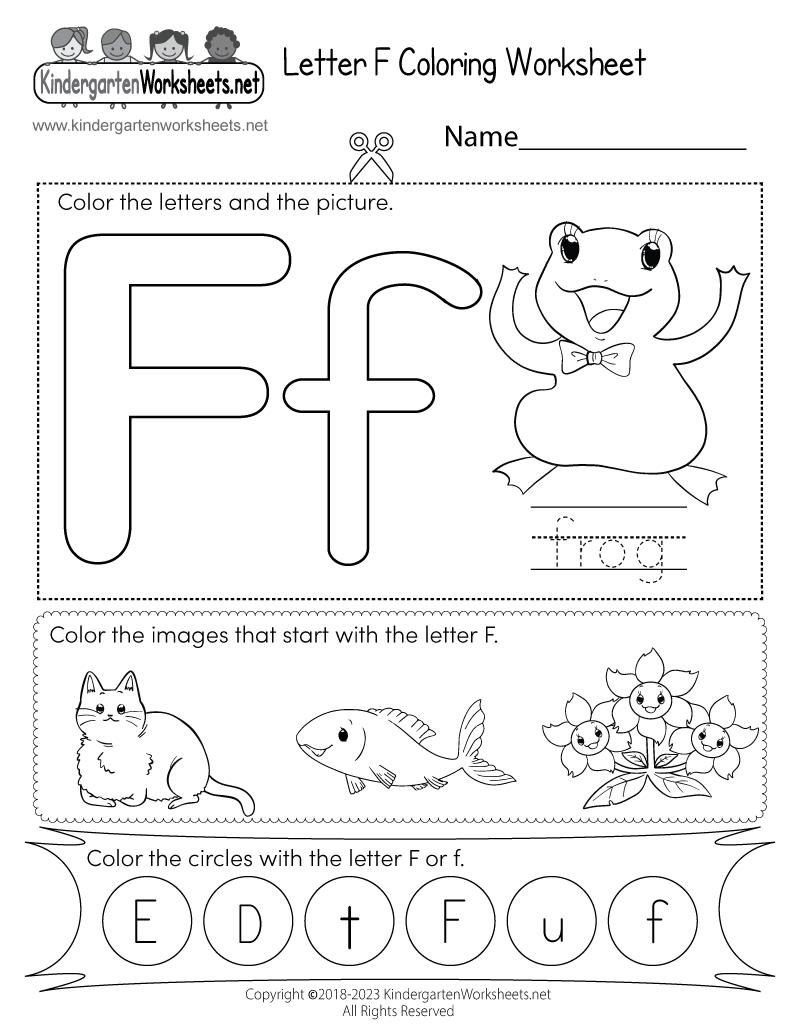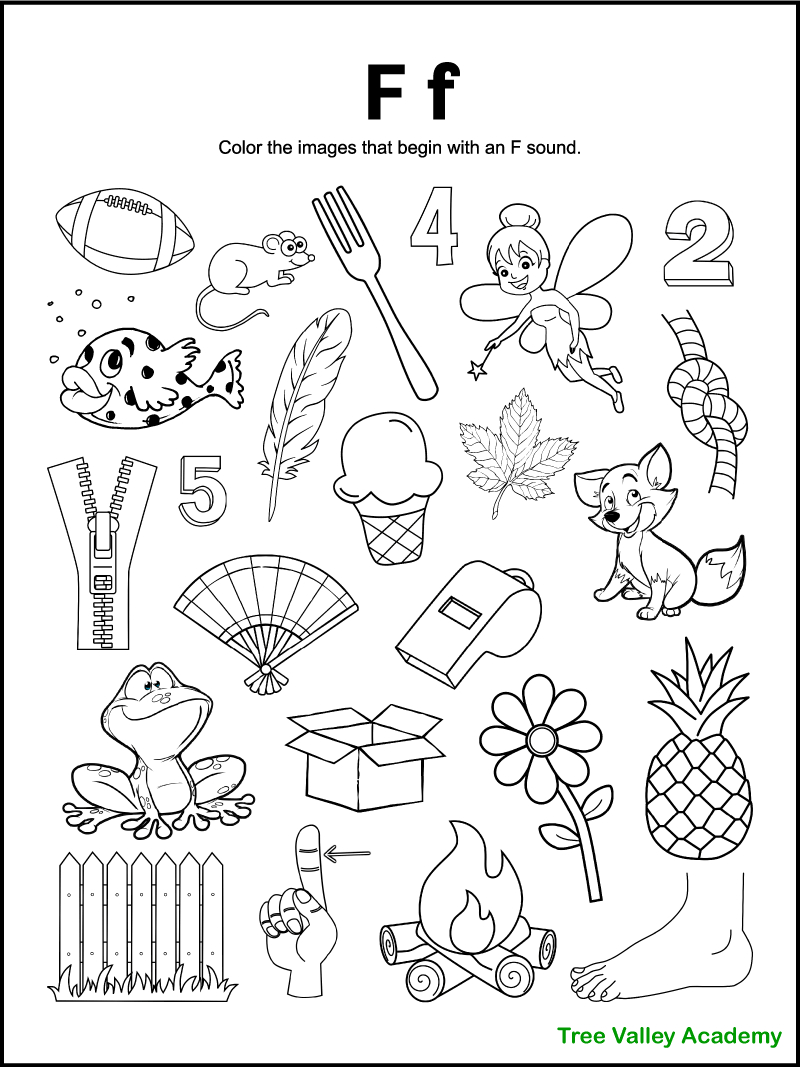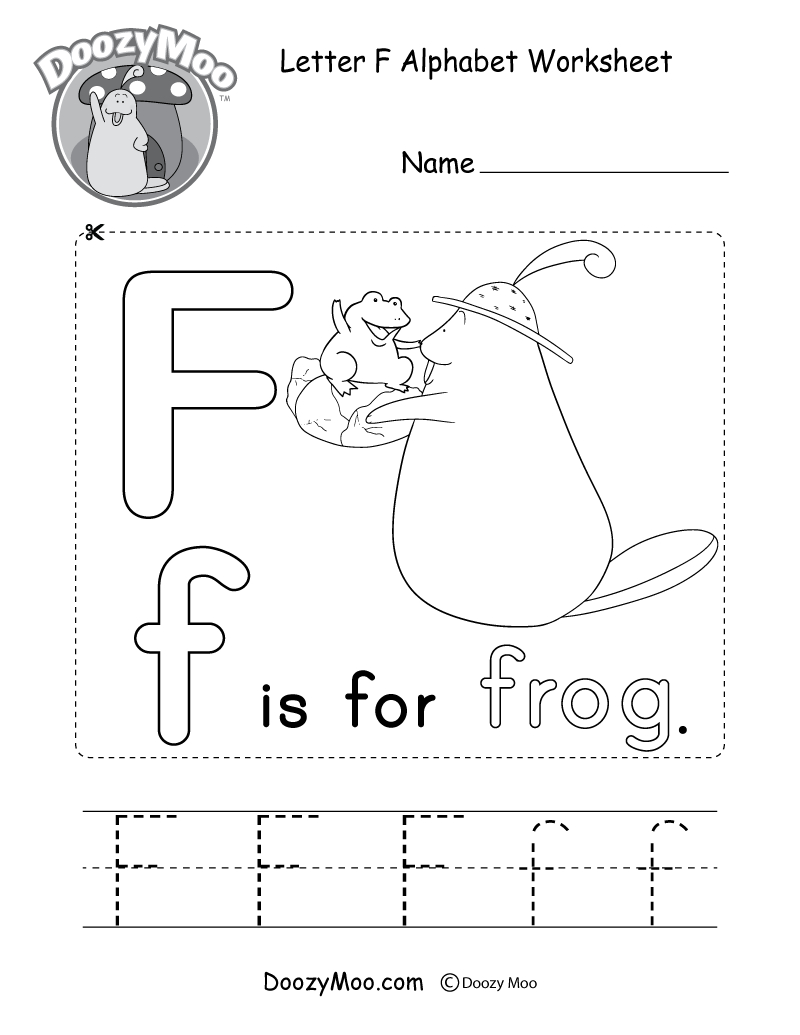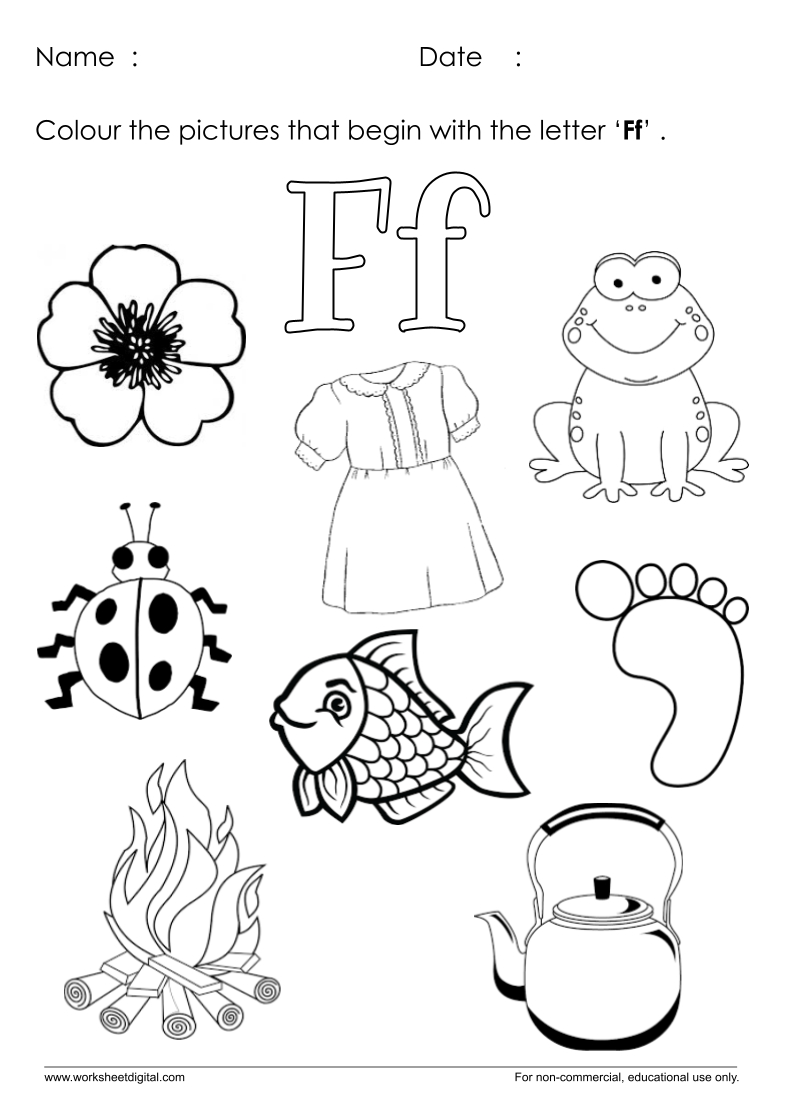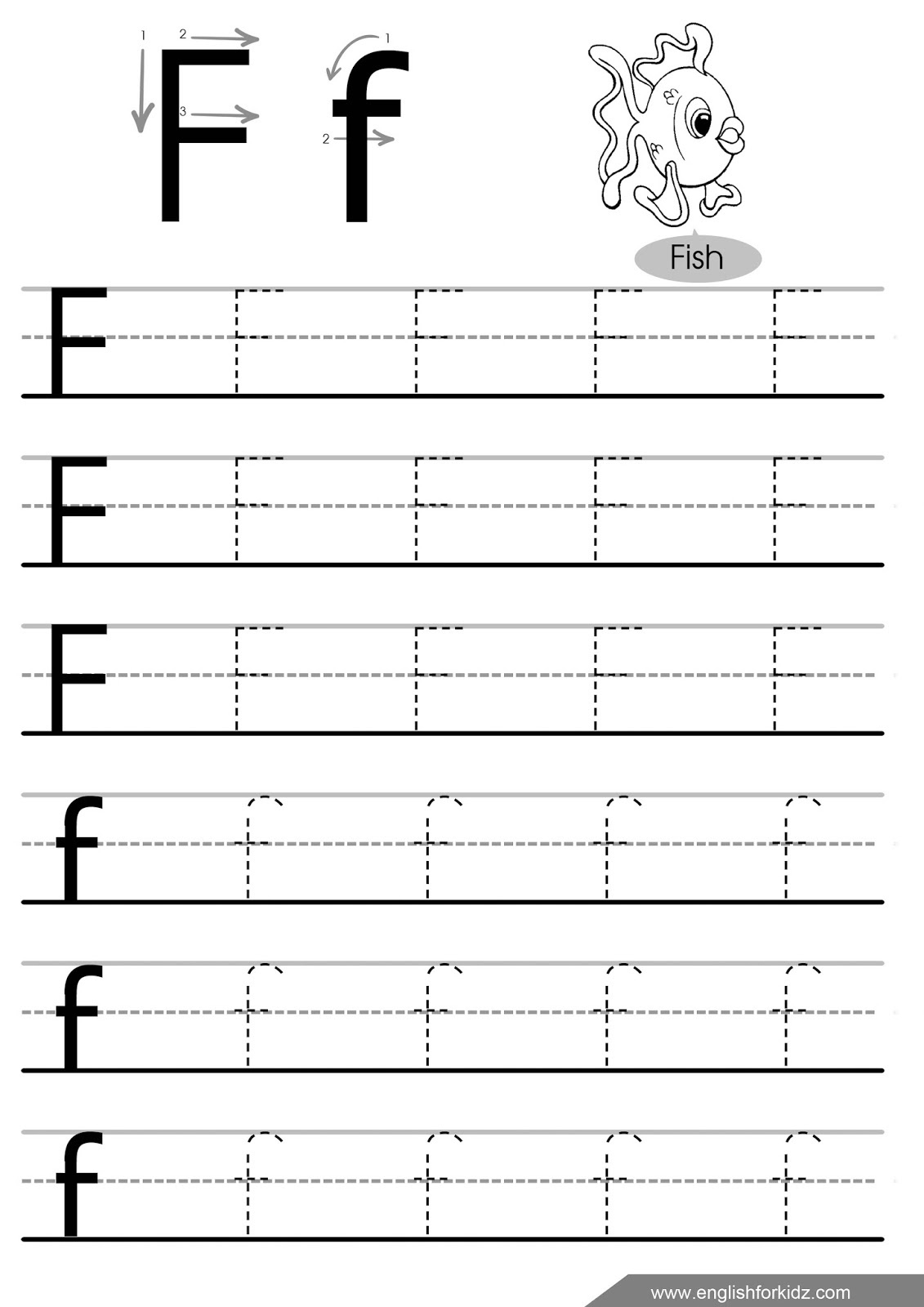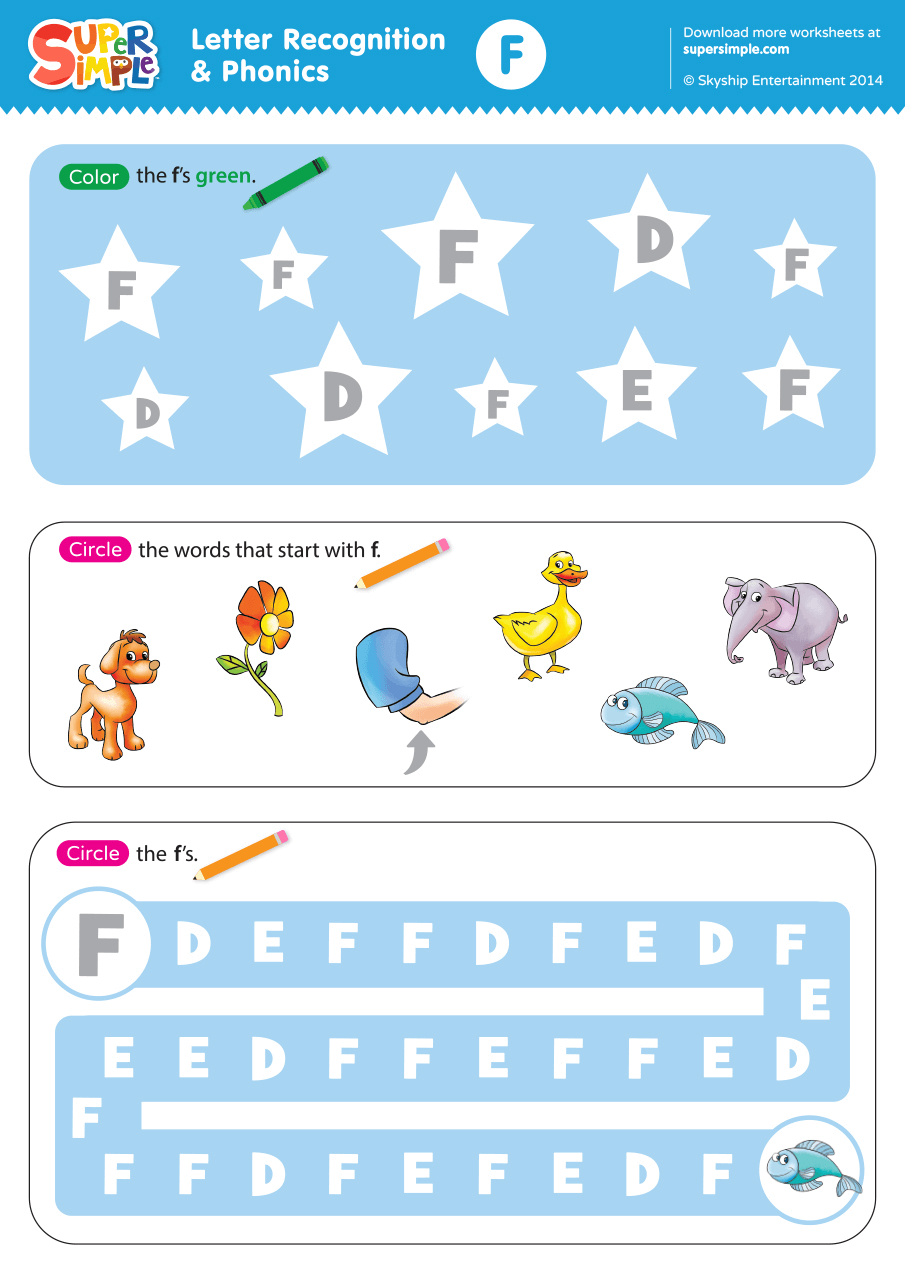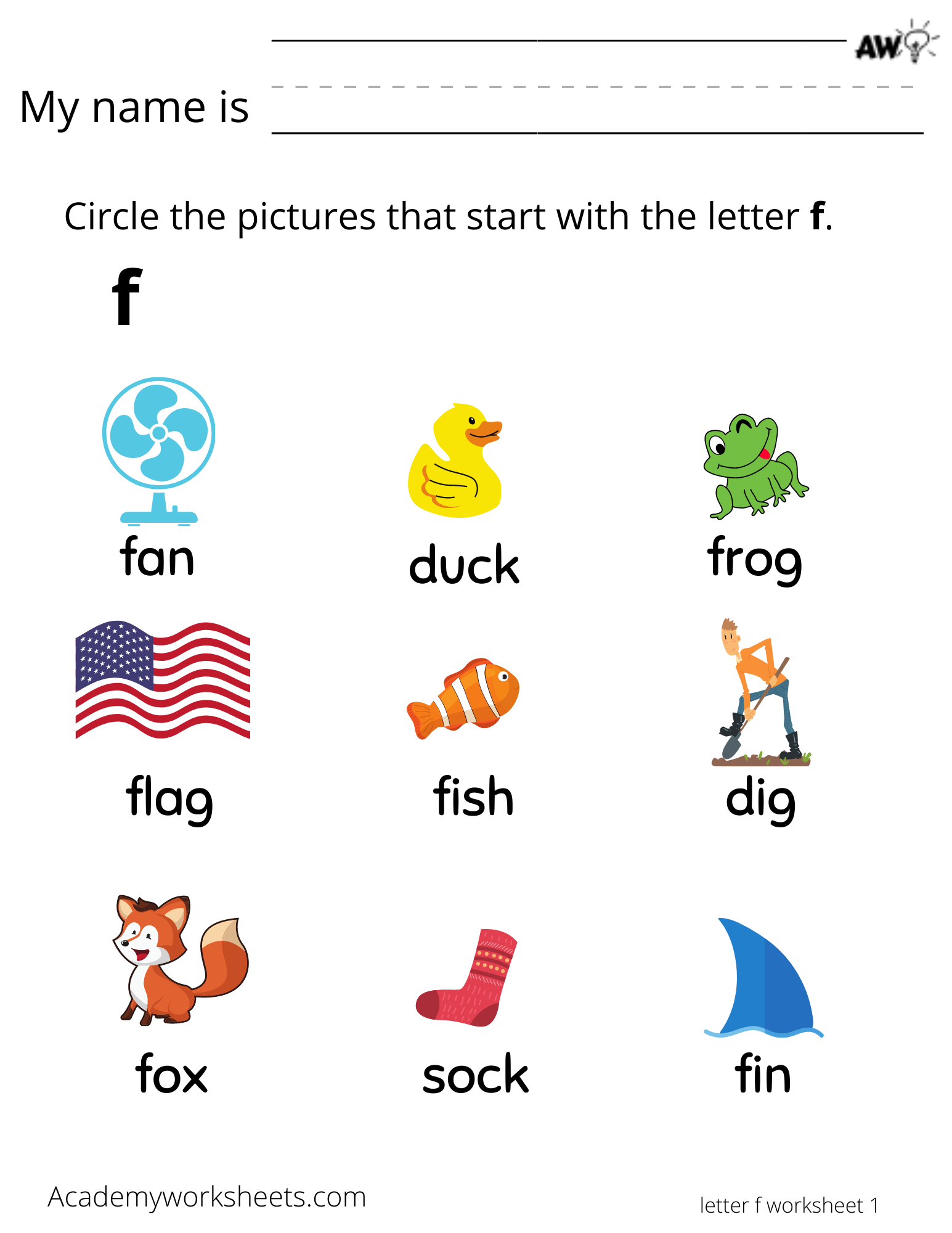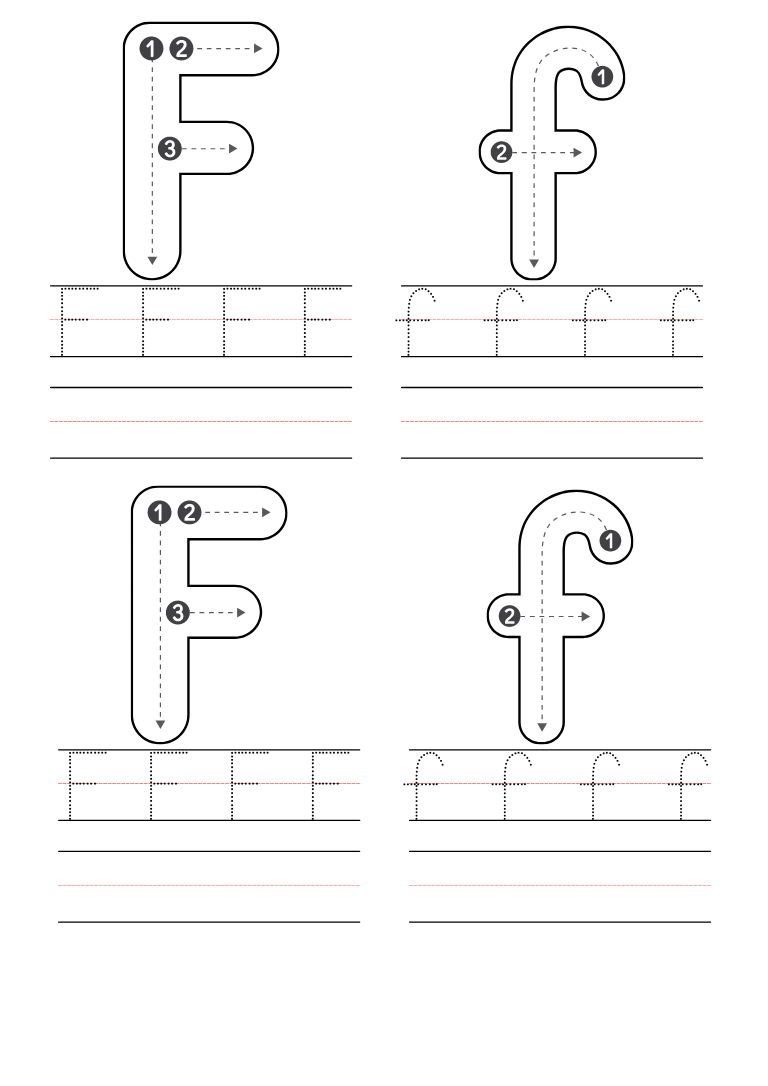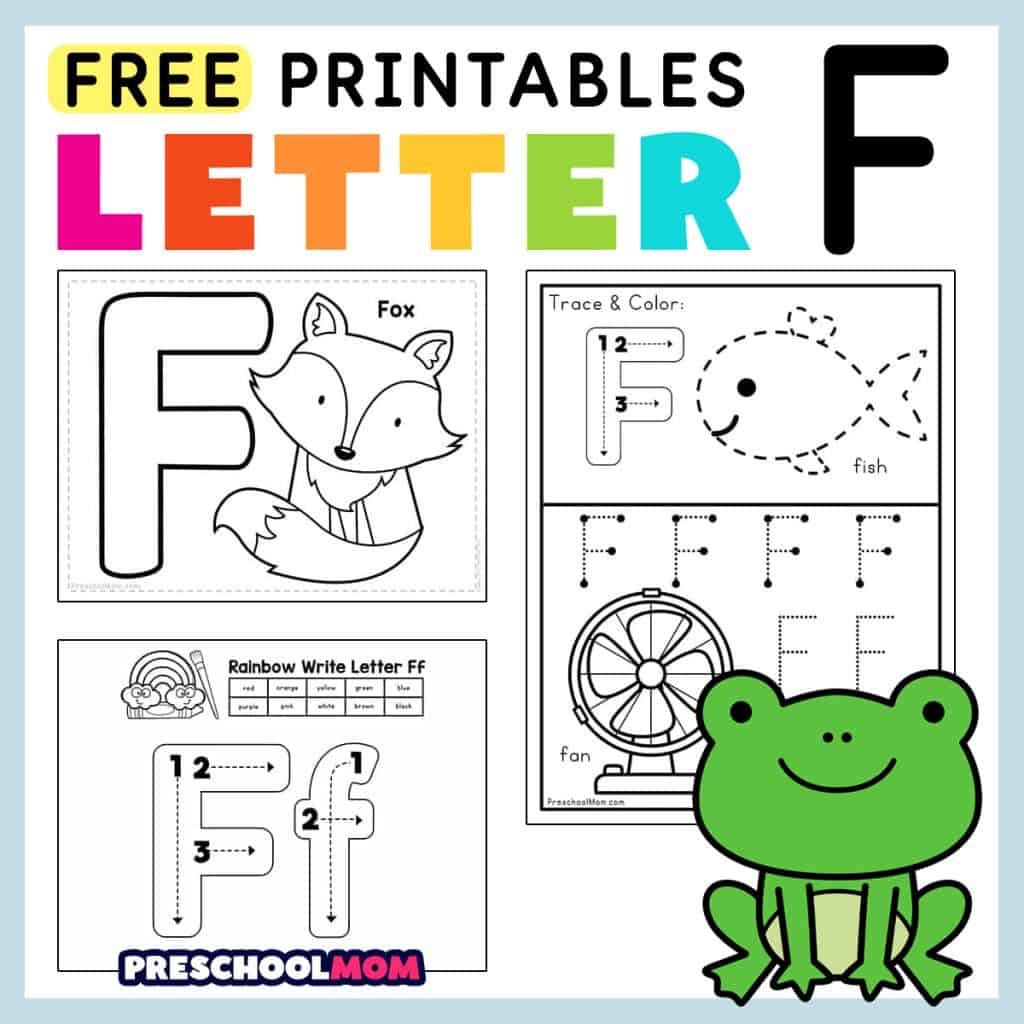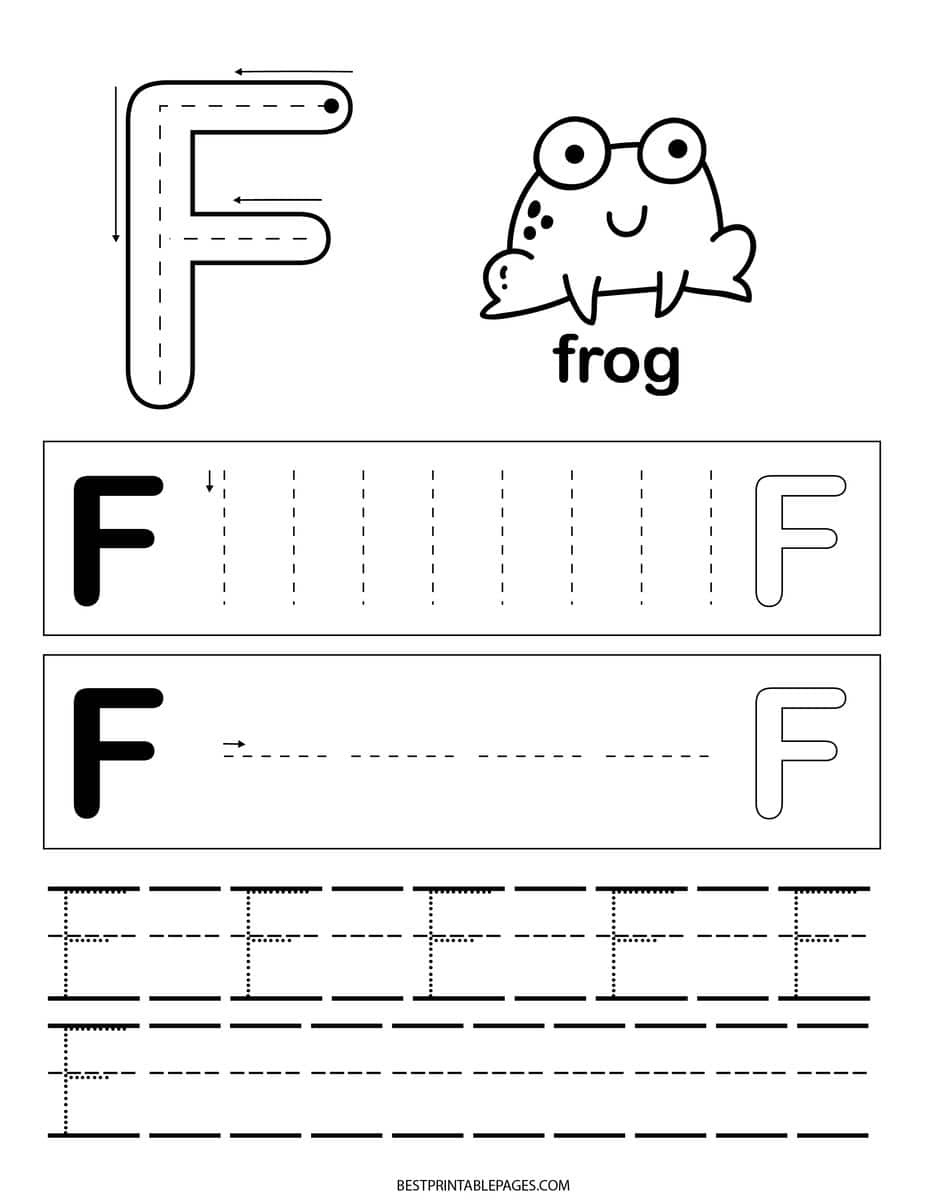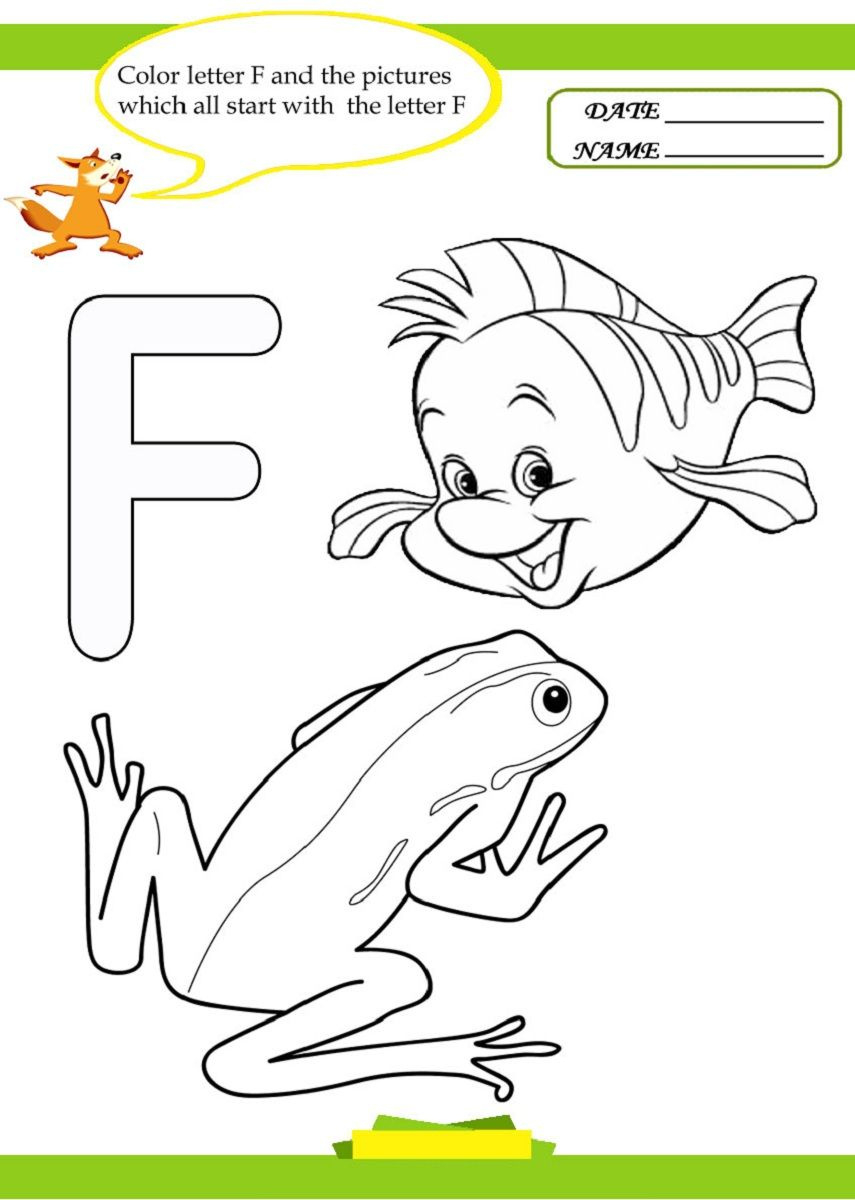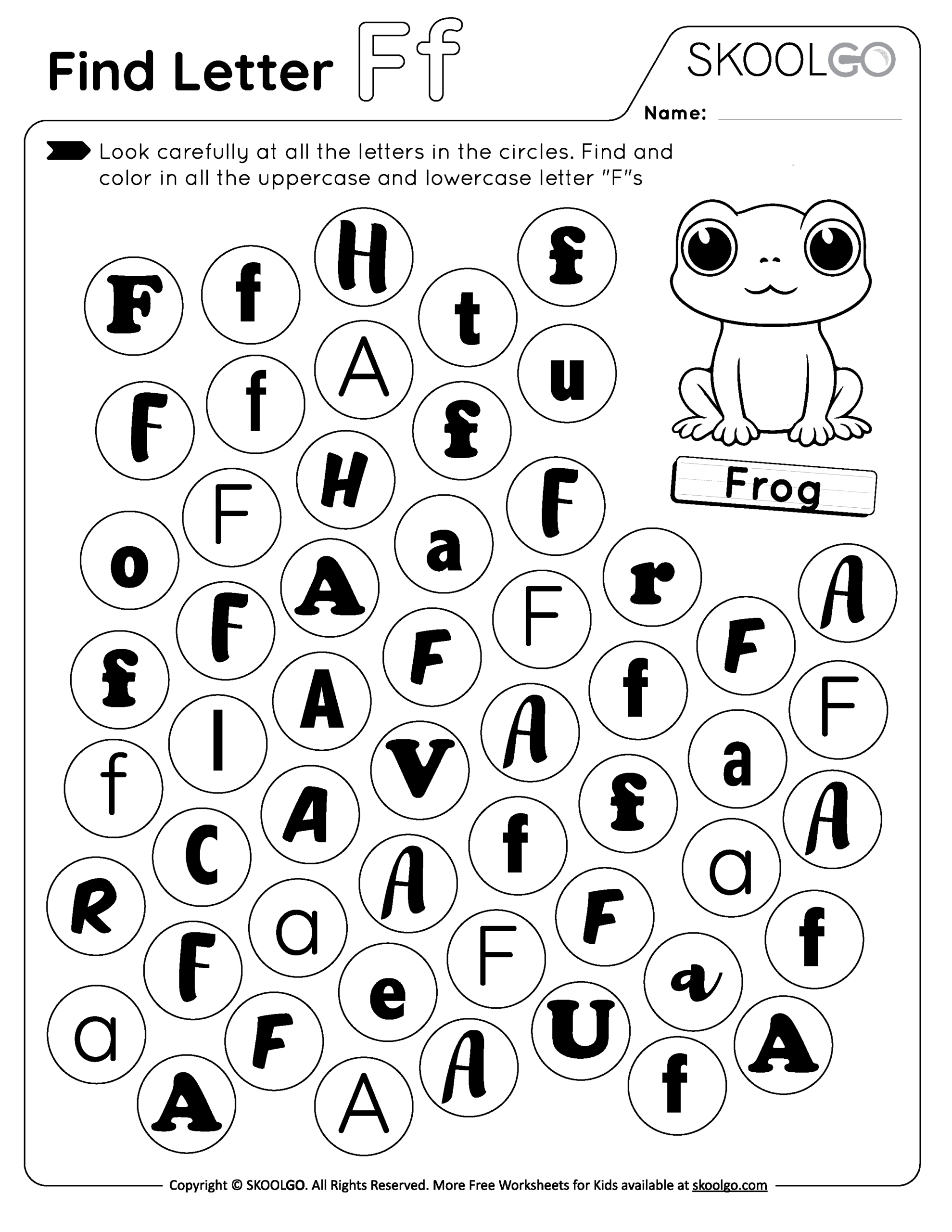Letter F Worksheets – Are you ready to initiate on a fascinating journey to learn about the fantastic world of Letter F worksheets? Your early learner is about to discover the wonders of the alphabet’s sixth letter! With a plethora of engaging activities, tracing exercises, phonics fun, and creative coloring, Letter F worksheets are the perfect tool to help your child master this important literacy skill. Get ready to explore the exciting ways Letter F worksheets can support your child’s learning adventure!
Letter F Worksheets Printable
What activities are typically included in Letter F worksheets for early learners?
While exploring Letter F worksheets, you’ll often find a variety of engaging activities designed to help early learners develop necessary skills. These activities are carefully crafted to cater to different learning styles, ensuring that every child has a fun and interactive experience.
Tracing and writing exercises
What better way to master the letter F than through tracing and writing exercises? These activities help your child develop their fine motor skills, hand-eye coordination, and overall handwriting abilities. By tracing and writing the uppercase and lowercase F, your child will become more confident in their writing skills.
Phonics and sound recognition activities
An necessary aspect of Letter F worksheets is phonics and sound recognition activities. These exercises help your child recognize the distinct sound of the letter F and its relationship with other letters.
Writing the letter F is not just about its physical appearance; it’s also about understanding its phonetic value. Through phonics exercises, your child will learn to associate the letter F with its corresponding sound, enabling them to read and spell words more effectively. This skill is crucial for building a strong foundation in reading and literacy.
Vocabulary building with words starting with F
Activities focused on vocabulary building with words starting with F are an excellent way to expand your child’s language skills. These exercises introduce your child to a range of words, such as “fish,” “fox,” and “flower,” which helps them develop their understanding of word meanings and associations.
With Letter F worksheets, your child will initiate on a fascinating journey of word discovery. By learning new words and their meanings, your child will broaden their vocabulary and improve their communication skills. This, in turn, will enhance their ability to express themselves effectively in writing and speaking.
How Can Letter F Worksheets Help Children Distinguish Between Uppercase and Lowercase F?
One of the vital skills that Letter F worksheets can help children develop is distinguishing between uppercase and lowercase F. This fundamental skill is crucial for reading and writing proficiency.
Visual Discrimination Exercises
On the path to mastering the alphabet, visual discrimination exercises play a vital role. Letter F worksheets often include activities that require your child to identify and circle the correct form of the letter F, whether uppercase or lowercase, amidst a sea of similar-looking letters. This exercise helps your child develop their visual skills, allowing them to recognize the distinct features of each letter.
Uppercase and Lowercase Letter Matching Games
Uppercase letters and their lowercase counterparts may look similar, but they have distinct differences. Letter F worksheets often include matching games that require your child to pair uppercase and lowercase F’s. This activity helps your child recognize the relationship between the two forms and understand when to use each.
Uppercase letters are often used at the beginning of sentences or for emphasis, while lowercase letters are used for the majority of writing. By recognizing the differences between uppercase and lowercase F, your child will develop a deeper understanding of how to use each correctly.
Writing and Tracing Uppercase and Lowercase F
Lowercase letters can be tricky to write, especially for young learners. Letter F worksheets provide opportunities for your child to practice writing and tracing both uppercase and lowercase F’s. This exercise helps develop their fine motor skills, hand-eye coordination, and overall handwriting abilities.
A crucial aspect of writing and tracing exercises is that they allow your child to develop muscle memory. As they repeatedly practice writing the correct forms of the letter F, they will begin to commit them to memory, making it easier to recall when writing in the future.
By incorporating these activities into Letter F worksheets, your child will develop a strong foundation in distinguishing between uppercase and lowercase F, paving the way for improved reading and writing skills.
What are some effective tracing exercises for improving handwriting skills in Letter F worksheets?
Not every worksheet is created equal, and when it comes to improving handwriting skills, some exercises are more effective than others. In Letter F worksheets, tracing exercises play a crucial role in developing muscle memory and fine motor skills. Here are some effective tracing exercises to include:
Guided tracing with arrows and directionals
Worksheets that provide guided tracing exercises with arrows and directionals help you understand the correct stroke direction and sequence for writing the letter F. These exercises are especially helpful for early learners who are still developing their hand-eye coordination and fine motor skills.
Free-form tracing with varied line widths and styles
Some worksheets offer free-form tracing exercises that allow you to practice writing the letter F with varied line widths and styles. This type of exercise helps you develop your own handwriting style and build confidence in writing the letter F.
Letter F worksheets that incorporate free-form tracing exercises with varied line widths and styles can help you develop your own unique handwriting style. By practicing with different line widths and styles, you’ll be able to recognize and write the letter F with ease, even when it appears in different fonts or handwriting styles.
Tracing with different tools, such as crayons or markers
Effective tracing exercises also involve using different tools, such as crayons or markers, to practice writing the letter F. This type of exercise helps you develop your hand-eye coordination and fine motor skills, while also introducing you to different textures and sensations.
Handwriting skills are not just about writing with a pencil or pen; they also involve using different tools and materials. By tracing the letter F with crayons or markers, you’ll be able to develop your hand-eye coordination and fine motor skills, while also exploring different textures and sensations. This can help make learning more engaging and fun!
How do Letter F worksheets incorporate phonics exercises to aid in sound recognition?
To effectively teach sound recognition, Letter F worksheets incorporate a variety of phonics exercises that cater to different learning styles. These exercises help you, as a learner, develop crucial skills in phonemic awareness, decoding, and encoding.
Word families and rhyming activities
Sounding out words with similar endings, such as “fat,” “cat,” and “hat,” helps you recognize patterns and relationships between sounds. This skill is crucial for reading and spelling abilities.
Sound isolation and identification exercises
Rhyming games and activities that focus on the /f/ sound, such as finding objects that start with the “f” sound, enable you to isolate and identify the sound in different words.
The ability to isolate and identify sounds is critical in developing phonemic awareness. By practicing sound isolation and identification exercises, you’ll become more confident in recognizing the /f/ sound in various words, which will improve your reading and spelling skills.
Phoneme segmentation and blending games
Games that involve breaking down words into individual sounds (phoneme segmentation) and then blending them together help you develop a deeper understanding of how sounds work together to form words.
Plus, these games make learning fun and engaging! By practicing phoneme segmentation and blending, you’ll be able to decode words more efficiently and build a stronger foundation in reading and spelling.
What creative coloring and drawing activities are focused on the letter F in these worksheets?
After exploring the various worksheets, you’ll discover a treasure trove of creative activities that cater to different learning styles and preferences.
Letter F-themed coloring pages
Likely, you’ll find coloring pages that feature the letter F prominently, allowing your child to engage with the shape and form of the letter in a fun and interactive way.
Drawing objects that start with the letter F
Creatively, your child will be encouraged to draw objects that start with the letter F, such as fish, flowers, or frogs, helping them develop their fine motor skills and associate the letter with real-life objects.
Letter F objects can be as simple as a fan or as complex as a fantastical creature, allowing your child’s imagination to run wild while still practicing their drawing skills.
Creating F-inspired artwork with various materials
Versatile materials like paint, markers, or crayons will be used to create unique and imaginative artwork inspired by the letter F, fostering your child’s creativity and self-expression.
Another exciting aspect of these worksheets is the opportunity for your child to experiment with different textures and colors, developing their fine motor skills and hand-eye coordination. By using various materials, your child will learn to think outside the box and explore new ways of creating art.
How Can Letter F Worksheets Expand a Child’s Vocabulary with Words that Start with F?
Keep in mind that Letter F worksheets can be a valuable tool in expanding your child’s vocabulary with words that start with the letter F. By incorporating various activities and exercises, these worksheets can help your child learn new words, recognize their meanings, and use them in context.
Word lists and vocabulary building exercises
Likewise, Letter F worksheets often include word lists and vocabulary building exercises that introduce your child to a range of F-words, such as fish, fox, and flower. These exercises can help your child learn to recognize and spell these words, and even categorize them by theme or meaning.
Sentence completion and word recognition activities
To make learning more engaging, Letter F worksheets often feature sentence completion and word recognition activities. These activities encourage your child to fill in the blanks with the correct F-word, promoting critical thinking and problem-solving skills.
Recognition of F-words in sentences helps your child understand their meanings and usage in context. This skill is vital for building a strong foundation in reading comprehension and vocabulary development.
Storytelling and creative writing with F-words
Completion of sentences is just the beginning. Letter F worksheets can also inspire creative writing and storytelling with F-words. By using words like fairy, frog, and forest, your child can create their own stories, fostering imagination and creativity.
With these activities, your child can develop a deeper understanding of F-words and their meanings, while also practicing their writing skills and expressing themselves through creative storytelling.
How Can You Make Learning Fun with Letter F Worksheets?
Now that you have a collection of Letter F worksheets, it’s time to think creatively about how to use them to make learning enjoyable and engaging for your child or student.
Interactive Games and Puzzles
Any worksheet that includes interactive games and puzzles can instantly capture a child’s attention and make learning fun. Look for worksheets that incorporate mazes, word searches, or matching games that focus on the letter F.
Collaborative Learning Activities
Interactive learning experiences can be even more effective when they involve collaboration. You can use Letter F worksheets to facilitate group activities, such as scavenger hunts or letter-finding games, that encourage teamwork and social interaction.
For instance, you can create a “F-themed” treasure hunt where children have to find objects around the classroom or at home that start with the letter F. This activity not only reinforces letter recognition but also promotes problem-solving and critical thinking skills.
Incorporating Letter F Worksheets into Daily Routines
Daily routines provide a great opportunity to sneak in some extra learning. You can incorporate Letter F worksheets into your child’s daily routine, such as during breakfast or right before bedtime, to make learning a fun and consistent part of their day.
Routines are crucial for young children, and incorporating Letter F worksheets into their daily schedule can help them develop a strong foundation in literacy skills. Consistency is key, so try to set aside a specific time each day to practice with your child.
How Do Letter F Worksheets Support the Overall Development of Early Literacy Skills in Young Children?
Your child’s early literacy skills are built upon a strong foundation of reading, writing, and communication skills. Letter F worksheets play a significant role in supporting this development by providing a range of activities that cater to different learning styles and abilities.
Building Foundational Reading Skills
Young learners need to develop necessary reading skills, such as recognizing and naming uppercase and lowercase letters, understanding letter-sound relationships, and building vocabulary. Letter F worksheets offer a variety of exercises that help children master these skills, including tracing and writing activities, word recognition, and sentence building.
Enhancing Phonological Awareness
Early learners need to develop phonological awareness, which is the ability to recognize and manipulate sounds in words. Letter F worksheets incorporate phonics exercises that aid in sound recognition, such as identifying the /f/ sound in words, word families, and rhyming activities.
To further enhance phonological awareness, Letter F worksheets often include activities that encourage children to listen to and repeat words that start with the /f/ sound, such as “fish” or “fox”. This helps children develop their ability to recognize and manipulate sounds, leading to improved reading and spelling skills.
Developing Writing and Communication Skills
Overall, Letter F worksheets provide opportunities for children to develop their writing and communication skills through creative coloring and drawing activities focused on the letter F. These activities help children develop their fine motor skills, hand-eye coordination, and creativity, while also encouraging them to express themselves through writing and drawing.
Skills such as writing, tracing, and coloring help children develop their hand-eye coordination, fine motor skills, and creativity, while also encouraging them to express themselves through writing and drawing. By incorporating these activities into Letter F worksheets, children can develop a strong foundation in writing and communication skills.
What’s Next in Your Learning Journey?
As a reminder, you’ve now unlocked the world of Letter F worksheets, packed with exciting activities to help your little learner grow! From tracing exercises to phonics games, these worksheets are designed to make learning fun and engaging. Note, the key to success lies in consistent practice and creative exploration. So, keep exploring, and watch your child’s literacy skills blossom like a flower in full bloom!
